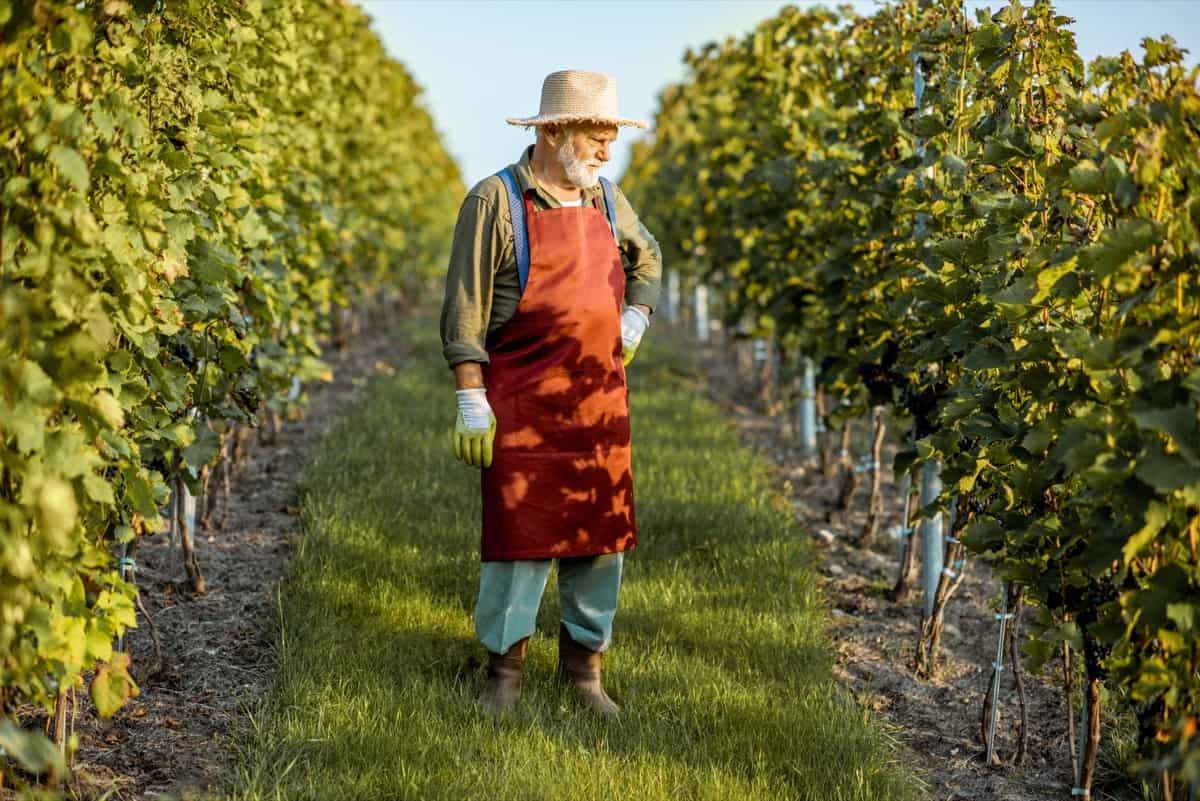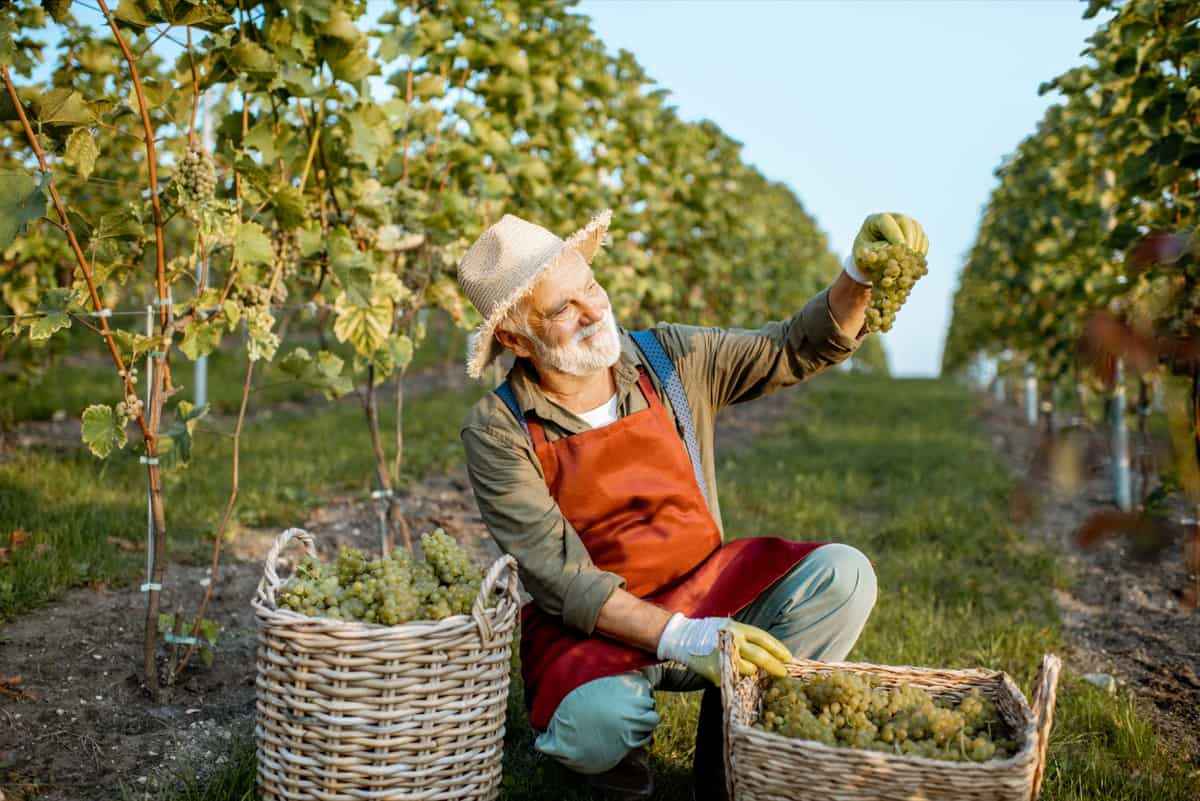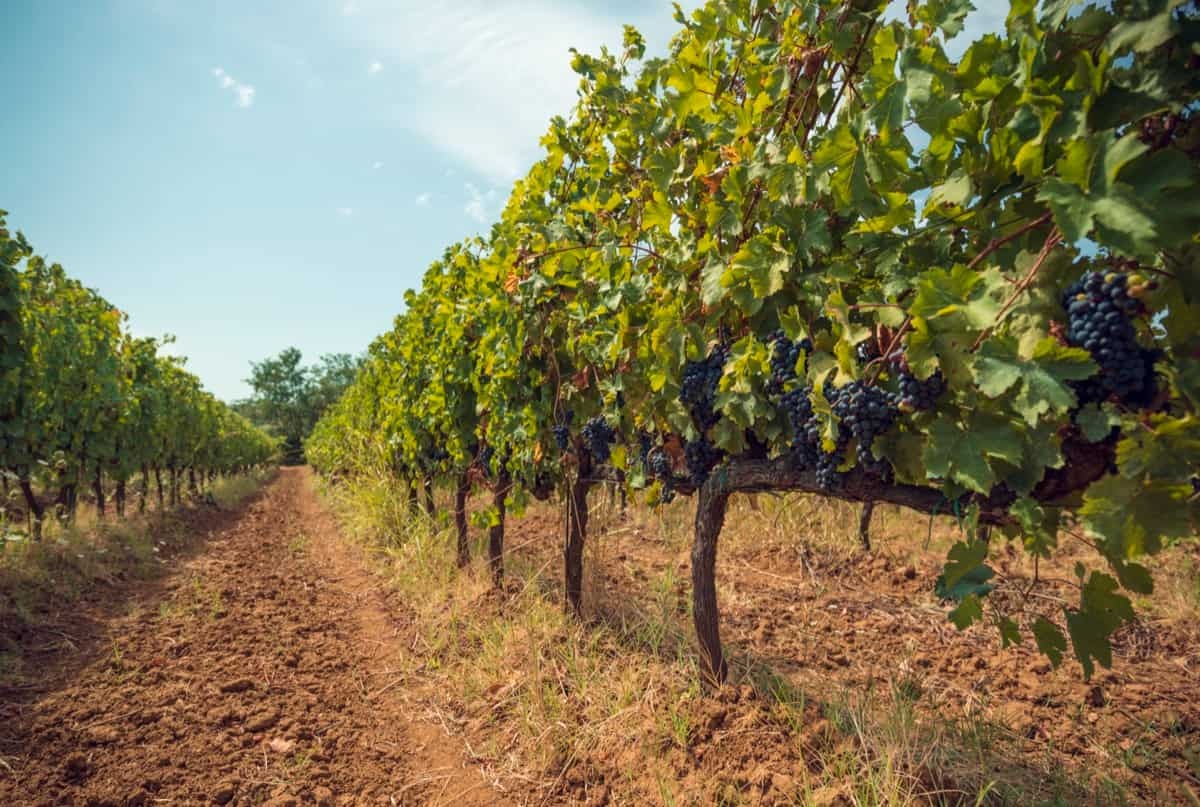Cover crops are crucial in sustainable agriculture and viticulture practices, providing many environmental, soil health, and productivity benefits. Incorporating a vineyard cover crop seed mix into your vineyard management plan can effectively rejuvenate the soil, enhance biodiversity, regulate pests, and protect the vineyard’s environment. Different vineyard cover crops serve unique roles, providing diverse benefits, from weed suppression and erosion control to nutrient cycling and pest regulation.

Integrating Cover Crops Into Vineyard
Types of Cover Crops for Vineyards
Diversified vineyard cover crop seed mixtures encompass a range of plant species, each selected for their specific advantages. Grasses like rye and oats are often chosen for their powerful root systems, excellent at preventing erosion and breaking up compacted soil. Legumes like clover and vetch add the crucial benefit of nitrogen fixation, enriching the soil while promoting vine health and productivity.
Non-leguminous broadleaf plants such as buckwheat and phacelia are excellent at suppressing weeds and attracting beneficial insects. The variety of cover crops ensures a wide array of benefits to the vineyard, and the choice of species should be tailored to the specific needs and goals of the vineyard.
Cover Crop Management in Vineyards
Efficient management of cover crops is paramount to maximize their benefits. Cover crop management in vineyards requires strategic planning around the vineyard’s existing cycle and careful consideration of the vineyard’s unique environmental conditions. Key considerations include the timing of planting and termination, irrigation requirements, and potential impacts on vine productivity. It’s also vital to monitor and manage the competition between the cover crops and the vines to ensure that the cover crops provide support rather than hinder vine growth.
Benefits of Cover Crops in Vineyards
The benefits of cover crops in vineyards are extensive and multifaceted. Providing a protective canopy safeguards the soil from erosion and leaching, leading to improved soil structure and fertility. Cover crops also act as a natural weed suppressor, reducing the need for chemical herbicides. Moreover, their role in nutrient cycling ensures that the soil remains fertile and healthy, fostering optimal vine growth. The beneficial insects attracted to cover crops also contribute to the regulation of pests and diseases, adding to the overall productivity of the vineyard.
Weed Suppression With Cover Crops
One of the primary benefits of incorporating cover crops into a vineyard management plan is the suppression of weeds. Cover crops compete with weeds for resources, reducing their proliferation. They also shade the soil, preventing weed seed germination, and some even produce substances that inhibit weed growth. Cover crops reduce the need for manual labor and chemical herbicides by minimizing weed presence, leading to cost savings and a more sustainable vineyard.
Nutrient Cycling With Cover Crops
Cover crops play an essential role in nutrient cycling within a vineyard. They absorb excess nutrients from the soil, preventing them from being lost through leaching. As cover crops wither and break down, they release nutrients back into the soil, benefiting the grapevines. Legume cover crops are especially valuable for nitrogen cycling since they can fix atmospheric nitrogen.
Erosion Control Using Cover Crops
Erosion control is another significant advantage of using cover crops. The roots of cover crops help hold the soil together, reducing erosion from wind and water. Additionally, cover crops’ above-ground biomass shields the soil surface, reducing rain’s direct impact and preventing soil erosion. Cover crops that prevent erosion maintain soil structure and fertility, vital for vineyard sustainability and productivity.
In case you missed it: From Fish to Greens: Integrating Fish Farming with Plant Cultivation

Biodiversity Enhancement Through Cover Cropping
Biodiversity enhancement is an often overlooked but critical benefit of cover cropping. A diverse vineyard cover crop seed mix introduces different plant species into the vineyard, increasing flora diversity. This attracts various beneficial insects and organisms, from pollinators to natural enemies of vineyard pests. An increase in biodiversity contributes to a more balanced and resilient ecosystem within the vineyard.
Cover Crop Selection for Specific Vineyard Goals
Cover crop selection should align with specific vineyard goals and environmental conditions. If the primary goal is to increase nitrogen in the soil, legume cover crops would be the best choice. Deep-rooted cover crops like rye or radish can benefit heavy soils or those prone to compaction. If weed suppression is the main objective, choosing cover crops that quickly establish and produce significant biomass, such as oats or buckwheat, can be advantageous. The selection should also consider local climate, soil type, and vineyard management practices.
Integrating Cover Crops Into Vineyard Management Plan
Integrating cover crops into a vineyard management plan requires careful planning and execution. The timing of planting cover crops is crucial, as it should align with the vineyard cycle and not compete with the vines for resources. Cover crops can be sown in the fall to provide winter soil cover or in the spring to offer benefits during the growing season.
Moreover, the choice of cover crops should complement the specific needs and goals of the vineyard. Regularly monitoring and adjusting cover crops is crucial to ensure they deliver anticipated benefits while supporting vine growth and productivity.
Long-term Benefits of Cover Cropping in Vineyards
Cover cropping in vineyards offers several long-term benefits. Apart from the immediate effects of improved soil structure and fertility, weed suppression, and pest regulation, cover crops contribute to overall vineyard sustainability. They reduce reliance on synthetic inputs, promote biodiversity, and can even enhance the quality of the grapes, thereby improving the vineyard’s economic viability in the long run.
Additionally, cover crops play a role in carbon sequestration, contributing to climate change mitigation efforts. In conclusion, integrating cover crops into vineyard management is an investment in the vineyard’s immediate productivity and a commitment to its future sustainability.
Regular Monitoring and Evaluation of Cover Crops in Vineyards
Establishing a system for regularly monitoring and evaluating cover crops in vineyards is a critical step in effective vineyard management. This system allows for timely identification and response to any issues that might arise, ensuring that the cover crops are beneficial and not competing with the grapevines. Key metrics to track include soil nutrient levels, cover crop growth, vine health, weed suppression, pest activity, and overall vineyard productivity.
The information gathered from regular monitoring helps make necessary adjustments to cover crop management practices and contributes to continuous improvement in vineyard sustainability and productivity. It also provides valuable data to inform future decisions about cover crop selection and management, contributing to more effective and efficient use of cover crops in the vineyard.
In case you missed it: How to Treat Brown Spots on Grapes Vine Leaves Naturally: Causes, Fix With Effective Organic Home Remedies

Conclusion
The integration of cover crops into vineyard management provides many benefits, serving as an invaluable tool for enhancing vineyards’ health, productivity, and sustainability. They are pivotal in nutrient cycling, weed suppression, erosion control, and biodiversity enhancement. Selecting an appropriate vineyard cover crop seed mix based on specific vineyard goals, environmental conditions, and vineyard management practices can significantly augment these benefits.
While the immediate benefits of cover crops are readily apparent, their long-term advantages, including promoting overall sustainability, enhancing grape quality, and contributing to climate change mitigation through carbon sequestration, offer a compelling case for their broader adoption. Therefore, cover crops stand as a testament to the synergy between agricultural productivity and environmental stewardship, epitomizing the virtues of sustainable viticulture.
- Feed Your Flock for Less: Top 10 Tips to Save on Chicken Feed
- Ultimate Guide to Ossabaw Island Hog: Breeding, Raising, Diet, and Care
- Hatching Answers: The Top 10 Reasons Your Chickens Aren’t Laying Eggs
- Eggs and Economics: Breaking Down the Cost of Raising Backyard Chickens
- Defend Your Greens: Proven Methods to Keep Iguanas Out of Your Garden
- Ultimate Guide to Cinnamon Queen Chicken: A Comprehensive Guide for Beginners
- Ultimate Guide to California Tan Chicken: Breeding, Raising, Diet, Egg-Production and Care
- Ultimate Guide to Marsh Daisy Chicken: Breeding, Raising, Diet, and Care
- 10 Types of Chicken Farming Businesses You Can Start for Profits